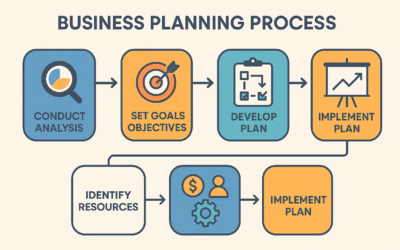When you are busy running your business, often you are focused on where the next dollar is coming from and how to make the business more profitable and successful. But as Steven R. Covey quoted in a chapter of his best-selling book “The 7 Habits of Highly Effective People”, you need to start with the end in mind.
The start is when you start your business or if you have already started, then the start is now! The end is when you want to exit your business. A strategy should be reviewed and changed periodically because conditions change.
When you exit may be the most emotional decision you make in your business. If you operate your business without an exit strategy, you will make this already very emotional decision and process even more difficult.
Here are 5 exit strategies suitable for small businesses.
- Merger
This is where you combine your business with another. This could be two businesses in the same industry, making a bigger and perhaps more competitive business. Or it could be a business with a complimentary product or service, e.g., a plumbing and electrical business merging to become one.
A merger may strengthen both businesses, but if you are wanting to exit the business altogether this is unlikely to work. For the merger to be successful the owners/leaders of each business need to remain and manage at least the part of the business they previously owned outright.
- Acquisition
This is where one company buys another outright. You would give up your business in exchange for the purchase price.
Depending on how badly the other business wants your business, you may be able to get a price that is higher than your business valuation.
Ideally, you should be at a point where you want to leave not only the business but also the industry. Often the sale comes with a non-competitive agreement, where you cannot work or start a competing business.
- Sell to someone you know
You could sell to a family member (e.g., child), friend, employee, business colleague, or a customer.
A crucial factor to consider is how the sale might affect your relationship with the buyer. If the business struggles or fails after the sale you might be blamed. Make sure you show all liabilities and profitability and your view of the prospects of the business.
- Initial Public Offering (IPO)
This is the first sale of a business’s shares to the public and is often referred to as “going public.”
This allows members of the public to own part or all of the business and you will need a Board of Directors to take charge of the management of the company.
Usually, public businesses are larger businesses in a high-growth period. More funds are gained to help pay off debt or reinvest in growth strategies.
This strategy is not ideal if you are wanting to exit the business quite quickly.
- Liquidation
This is where you cease trading and sell your business assets. If you have any creditors, they get paid the first form of any money received.
This strategy does not allow you to keep your business concept, reputation, or customers. Your business does not live on.
Global Resources can aid you to plan the exit strategy that is best for you and your business.

0 Comments